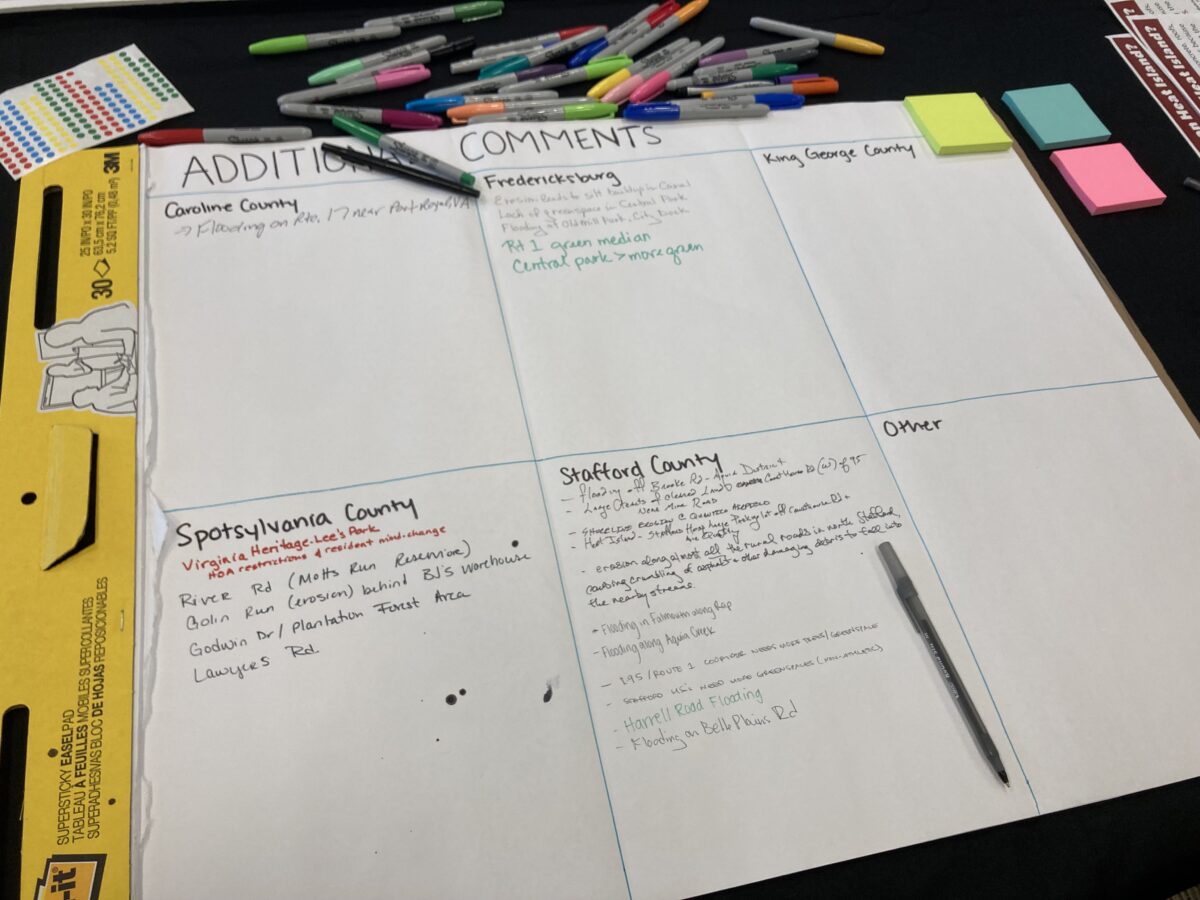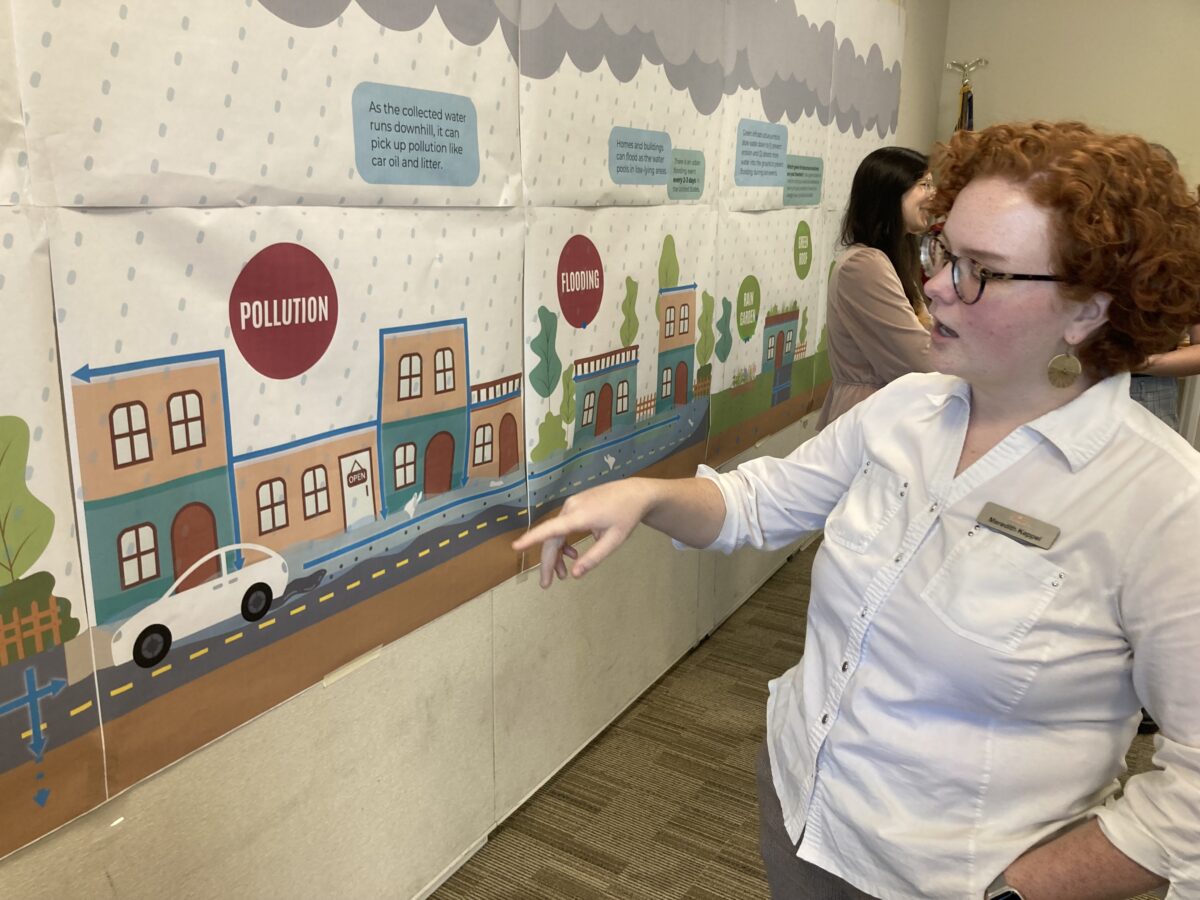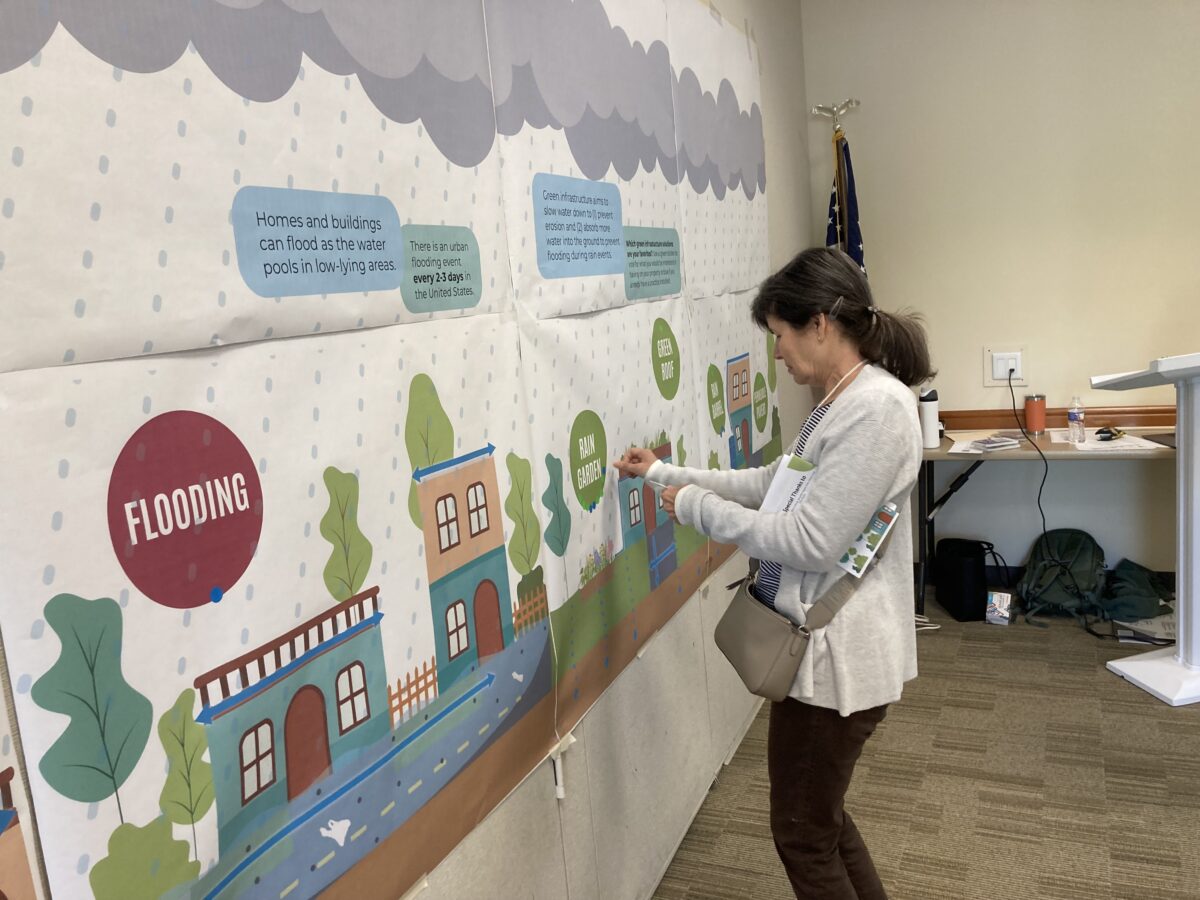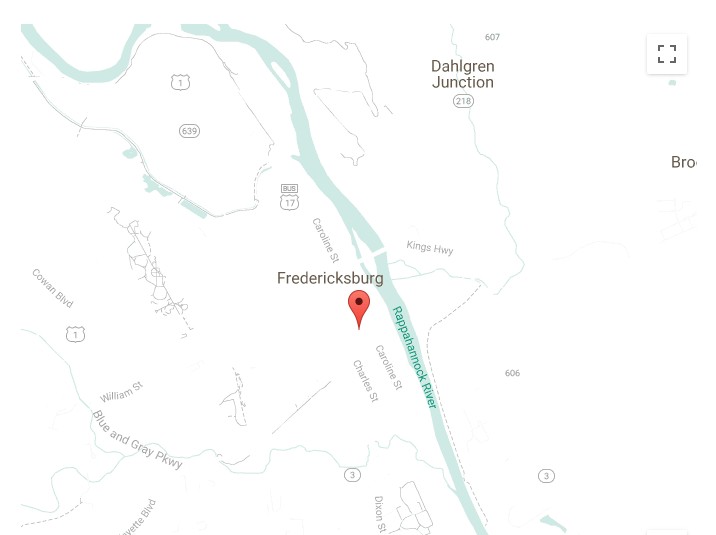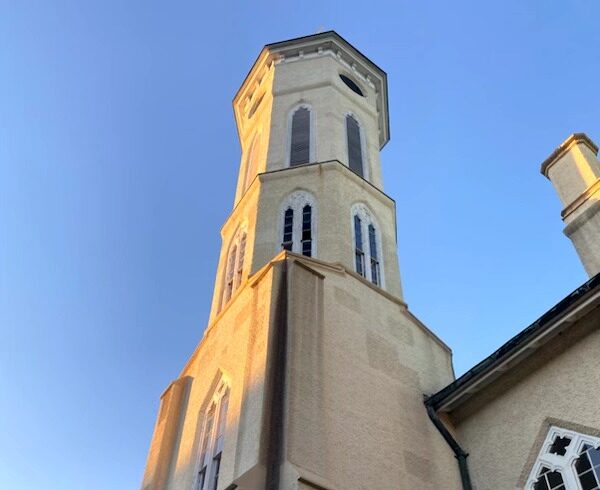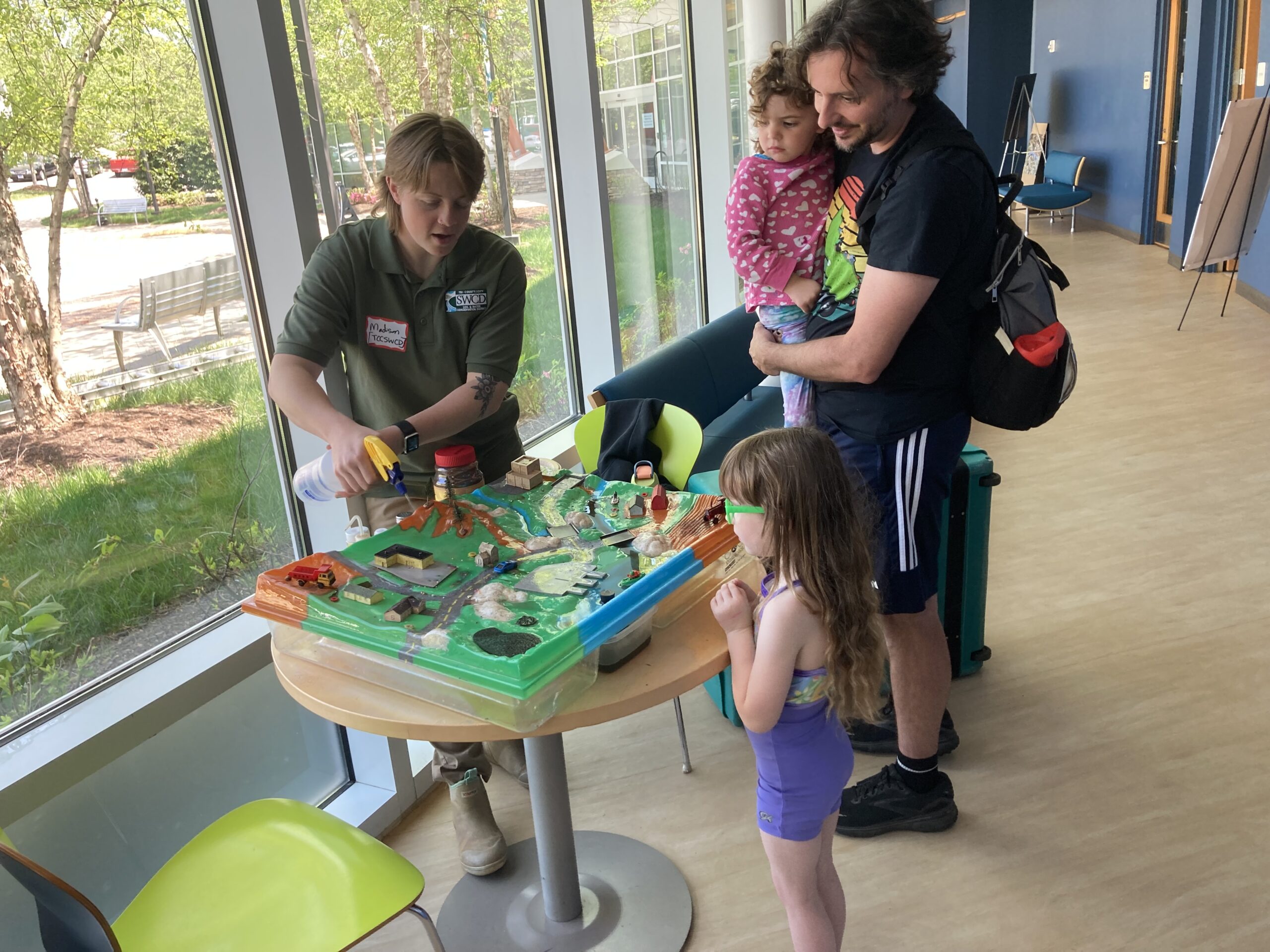
At North Stafford High School, the hottest point in the Fredericksburg region, temperatures are on average 17 degrees warmer than the coolest spots. Also, as the just as the footprint of the school has expanded over the years, so has the amount of stormwater runoff, which is contributing to significant erosion at certain points.
Cosner Park, in Spotsylvania, has been so severely affected by the water that drains to it from the surrounding development that it is always soggy. The riverbank of the park has eroded to the point where it’s become unsafe, and the fence that prevents the public from accessing the riverbank requires constant maintenance.
Cedell Brooks Park, in King George County, is also experiencing erosion, which has been exacerbated since a picnic shelter was built there last year.
The problems at all three of these sites can be mitigated through green infrastructure—anything that captures and absorbs rain where it falls.
“It’s about reducing both the volume and velocity of runoff,” said Meredith Keppel, environmental planner with the George Washington Regional Commission.
The three sites were presented as case studies at the Green Infrastructure Charette that the GWRC sponsored on Friday at the Howell Library in Stafford.
A charette is a meeting in which all stakeholders in a project attempt to resolve conflicts and map solutions. Friday’s event, Keppel said, was about “connecting the dots” between organizations, projects, and funding bodies.
Examples of green infrastructure include conservation landscaping (gardens of native plants that sit in a depression to filter and collect runoff); rainwater harvesting; rain gardens; permeable pavement; retention ponds; bioswales (vegetated ditches that collect and filter runoff; and green roofs, which capture and store rainwater.
The three case studies are all “shovel ready” and can apply for funding through the Virginia Conservation Assistance Program. The goal of Friday’s event was for these projects to firm up their proposals and better position them to apply for the funding.
In addition to the case studies, charette participants could explore a map of the region showing where there are urban heat islands and problems with flooding, erosion, or lack of green space.
They could also vote on the types of green infrastructure they’d be interested in installing on their own properties, and network with green infrastructure resources, to include funding opportunities.
The Chesapeake Bay Trust and the EPA for provided technical assistance for Friday’s charette through their Green Streets, Green Jobs, Green Towns grant.
